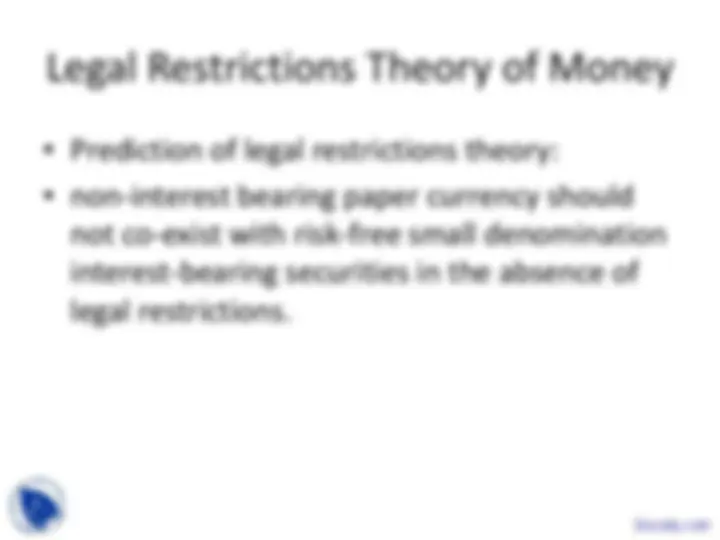






















Study with the several resources on Docsity

Earn points by helping other students or get them with a premium plan


Prepare for your exams
Study with the several resources on Docsity

Earn points to download
Earn points by helping other students or get them with a premium plan
Community
Ask the community for help and clear up your study doubts
Discover the best universities in your country according to Docsity users
Free resources
Download our free guides on studying techniques, anxiety management strategies, and thesis advice from Docsity tutors
Banking is an ever green field of study. In these slides of Banking, the Lecturer has discussed following important points : Fiat Money Economy, Ad Hoc Formulation, Miuf Approach, Theory of Monetary Exchange, Laissez Faire, Critical Evaluation, Intergenerational Contracts, Legal Restrictions, Miuf and Cia, Inconvertibility
Typology: Slides
1 / 28

This page cannot be seen from the preview
Don't miss anything!





















The young chooses,
~ c t
, c t + 1
, kt, and mt that maximises;
u u c c t t
=
(
~ , )
1
~ c k m y t t t t
c k v m
P
P
t t t t
t
t
= + +
1 1
1
γ
Let M M t t = + − ( 1 ) 1 μ
μ ≥ − 1
The interior solution for a monetary equilibrium occurs when kt = 0
A condition of equilibrium is μ < δ which demonstrates the ‘tenuousness of
equilibrium’.
t
t t t P
C = y− −C−)+
C*t+
Y Ct
γY
C*t+
Y Ct
γY
inflation P t+
= P t
and Y >
γY
P t
then the upper budget
line swings down.
/P t+
= γ, the
young are indifferent
between storing their
output and receiving
money from the old.
Y(P/P t+
)
say st = ϕ(mt)
ϕ‘ < 0
this leads to the composite function
u =
u (ct, nt, mt, ct+1, nt+1,mt+1)
which resembles the MIUF approach. Note that unlike the simple MIUF
approach where,
∂
∂
→ ∞ as^ m → 0
In the indirect utility approach if m = 0, this simply implies that the
holding costs of money are too high. Similarly it allows satiation to be
reached with finite m if ϕ (^) ′′ > 0. Giving money a framework such as this
does not imply that money is ‘intrinsically useless’.
t t t
U c
−
=
∞
∑
1
1
m m
t b^ b^ y^ r b
t t
t
− − −
1 1 1
c
m
t
t
t